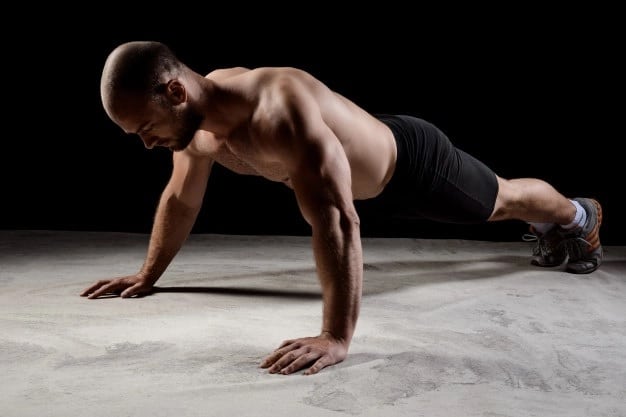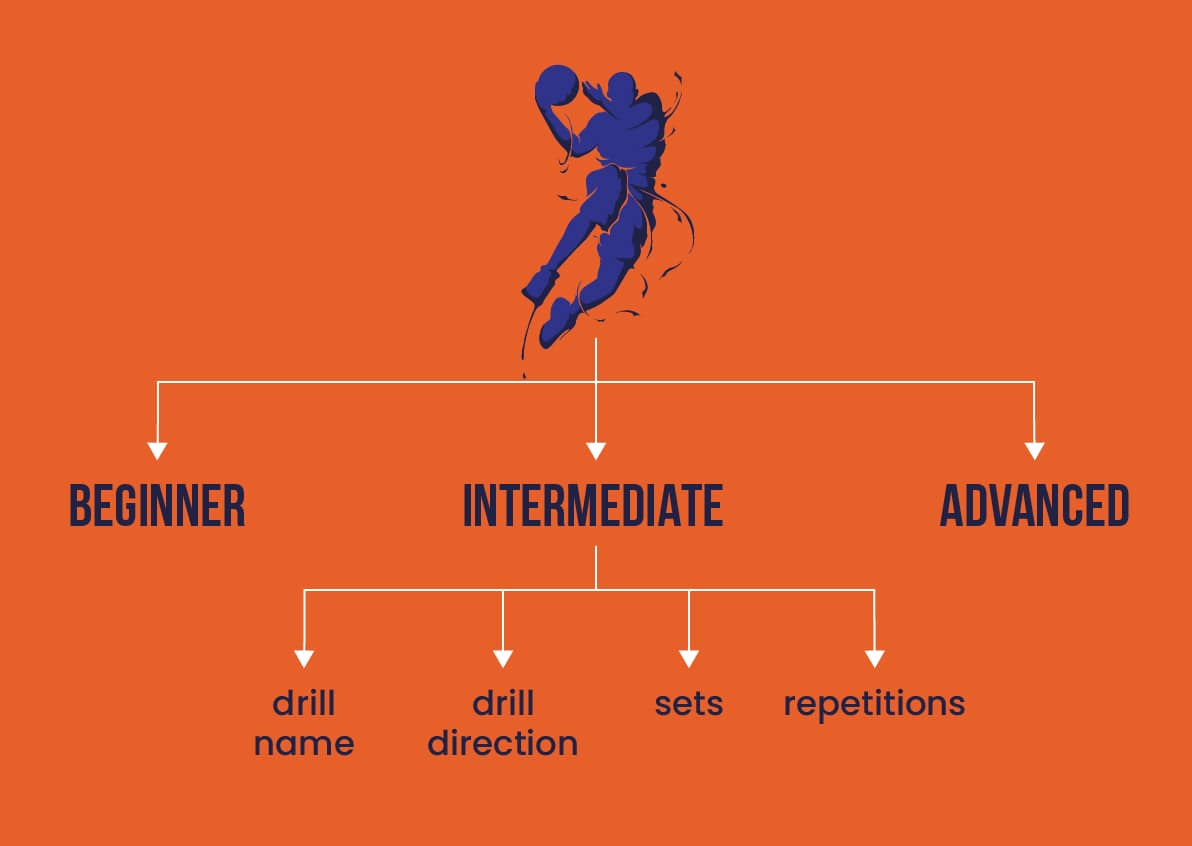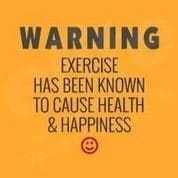
We mostly associate Plyometrics With Leg Exercises and that is because Jumping Plyometrics are so popular, especially for those who harbor ambitions of Increasing Their Vertical Jump.
Most Beginner Plyometrics place tremendous emphasis on muscles in the lower body. The performance of Upper Body Plyometrics is just as critical to Jumping Higher.
We have already touched on some Upper Body Plyometrics in our other blogs about Jump Training. Many of them look more like fun than a strenuous Jump Workout.
They often involve the use of additional props - normally a medicine ball or just a regular ball. The latter is a common feature in Basketball Plyometrics, for example.
12 Powerful upper body plyometrics Exercises to jump higher

- Beginner workout
1-
Drill Name: Passing Sit Ups
Drill Direction:
When you perform a standard sit-up, you are trying to assess the strength of your abdominal core and the hip flexors. You also perform this drill to push your body’s boundaries on endurance.
With the plyometrics element you are merely adding to the challenge, by also incorporating a medicine ball or any ball similar in function to that. When you rise up off the ground, you need to complete a chest pass to a partner, which helps increase the explosive power coming out of your arms, chest and shoulders.Reps: 12-16 Reps
Sets: Between 3-5 Sets
2-
Drill Name: Medicine Ball Slam
Drill Direction:
There are actually very few drills that provide a more comprehensive workout for the body. Just about every major muscle group in the body benefits from this workout. However, we would be failing in our duty if we did not highlight the significance of the workout for the shoulders, chest, upper back, triceps and biceps.
As a secondary function, there is also a lot of squatting and pushing up into the air with this drill, which means you are also promoting the explosive release from the lower body, along with the stability provided by the abdominal core, when you effectively complete a countermovement while performing these slams.Reps: 20 Reps
Sets: 5 Sets
3-
Drill Name: Medicine Ball Wall Dribble
Drill Direction:
The primary function of this drill is to improve the stability of your rotator cuff, which basically constitutes a small group of muscles surrounding the shoulder. Stability is almost always associated with strength and that remains relevant with this drill.
The drill also enhances stability in the core and because it is really such a mundane task, we can safely report there are few drills that will do more for mental fortitude, which is something that everybody needs in an athletic environment.
Reps: One Minute At A Time
Sets: Total of 20 Minutes
4-
Drill Name: Forward Hops
Drill Direction:
The primary function of this drill is to workout the calves, glutes and hip flexors. The secondary function of this drill is to workout the hamstrings and quads. By performing this drill, you are also teaching your body to better cushion the blow/shock when landing after completing a vertical jump.
Reps: 8 Reps
Sets: 2 Sets
- Intermediate workout
1-
Drill Name: Medicine Ball Drop
Drill Direction:
You perform this drill to increase the power output in your upper body, not as a replacement for the power produced in the lower legs but to complement it. You should feel the workout in the prime movers of the shoulder joints.
Reps: 10 Reps
Sets: 5 Sets
2-
Drill Name: Chest Pass
Drill Direction:
The best exercises are always those which can somehow mimic a game situation. There are few drills better suited to enhancing those outcomes than the chest pass, which is particularly relevant for basketball and netball players.
The primary function of this drill is to increase strength and power output in the abdominal core and the chest, as the name of the drill would suggest. As a secondary function, this workout is ideal for the biceps, triceps and shoulders.
It really does not get more upper body than this.Reps: 16 Reps
Sets: Three Sets
3-
Drill Name: Overhead Throw
Drill Direction:
The primary function of this drill is to workout the abdominal core, back and the shoulders. As a secondary function, this drill also enhances stability and flexibility in the spine. To some degree this drill is another example of a training routine that mimics the game situation, although it might not be the best example of this.
Reps: 12 Reps
Sets: Six Sets
4-
Drill Name: Rotational Wall Slam
Drill Direction:
When you perform this drill the emphasis should always be on engaging your abdominal core, while adopting and adhering to the right breathing patterns. When you exhale, you should slam the ball in front of you with everything that you have. This drill promotes raw core strength and power.
Reps: 20 Slams per set.
Sets: Three Sets
- advanced workout
1-
Drill Name: Depth Plyo Push Ups
Drill Direction:
The primary function of this workout is to increase strength in the chest and the shoulders. The secondary function of this drill is to increase strength and capacity in the forearms, middle back and the triceps.
Once again, it would be remiss of us to not underscore the significance of mastering the basic exercise before attempting to add the plyometrics element. In the context of this very difficult exercise, we could not possibly stress that enough. If you don’t adhere to that principle you will in fact hurt yourself.Reps: 10 Reps
Sets: Three Sets
2-
Drill Name: Plyo Clap Push Ups
Drill Direction:
When you perform this drill, the first thing to keep in mind is that it is going to be explosive and this is what ultimately sets it apart from the more conventional pushup. Before you embark on a campaign with this drill, it is important to master the basic workout form first. If you do not, replicating it in a more powerful way will actually be more counterproductive than anything else.
The traditional pushup is nothing more than coming down and then coming up. Your hands will be about shoulder width apart and your feet will be wider, which makes it easier for you to balance.
When you add the plyometric element, you are going to lower yourself towards the ground and then explode into the air. Performing this at a high intensity is one thing but it is actually more important that when you perform this drill, your hands do not make any connection with the ground.
That is ultimately what plyometrics is really about. It is about the amount of foot and hand contacts that you make when performing the workout. The less time you spend touching the ground, the better.
In the context of this drill, you would also add the clap for an additional challenge.
Reps: 10 Reps
Sets: Three Sets
3-
Drill Name: Plyo Dips
When you perform this drill, your triceps, shoulders and upper back are forced to carry a considerable amount of the burden. They support you body weight as you drop and they are also your primary lifters, when you subsequently raise the level of your body weight.
The plyometrics element of this drill dictates that you explode off the supporting box, bench or even bars. You can then add to the challenge by exploding high enough in the air to allow for a clap before your hands touch the supporting surface again.
Reps: Between 10-20 Reps per Set
Sets: Between 3-5 Sets per Session
4-
Drill Name: Arch Chop
The key when performing this drill is to actually start it slow and then gradually increase the speed of your body’s movement, the more comfortable that you get. So, there is tremendous emphasis on speed and rhythm here.
The primary function of this drill is something the educated people call trunk extensions.
As a secondary function, the drill also promotes the upward rotation of the scapula and clavicle. In other words, your shoulders.
The drill also facilitates shoulder flexion, which is also a key movement when jumping.
The drill, when done right, also promotes the lateral flexion, rotation and extension of the spine - a part of the body which no athlete worth his salt can actually do without. Then there is also the internal and external rotation that the drill promotes in the hips.
Finally, the extension and rotation of the knees is a serious incentive to perform this drill. But, then again, that is lower body stuff!
Reps: Between 10-20 Reps
Sets: Between 2-3 Sets
Benefits Of Upper Body Plyometrics
A more thorough examination of your training options will reveal that when all of the elements are combined - that is the arms, chest, shoulders, back and abdominal core - you are actually contributing to the explosive power produced by your body when jumping.
It plays a highly significant role in increasing the capacity of your torso and upper limbs to produce explosive power of their own, without the help of the lower limbs.
Another grievance we ourselves have expressed about upper body jump training is that so much of it is dedicated to Weight Training.
They are a suitable alternative to the conventional weight training regimens out there.

It also help keep you interested in working out the core and back, while also producing meaningful jump results at the same time.
It often involves the use of some kind of ball and also better incorporate some of the movements that you can expect your body to make while jumping. We are making particular reference to the flexing movements of the torso and the hips.
We are also talking about things that are common in sports involving balls, like passing, catching, throwing and gripping.
There are many instances where Upper Plyos actually incorporate a full body workout - which can be effective if you are struggling for time to train.
Honestly, we don’t think any form of plyometrics has ever been a hard sell. Plyometrics certainly isn’t a hard sell, as the benefits far outweigh the negatives.
When To Perform Upper Body Plyometric Exercises
We have already hinted at this a little above. At their very core, these exercises provide a meaningful alternative to weight lifting.
If you are looking for higher levels of intensity for the entire body and not just the lower limbs, that would be a good time for Upper Body Plyometrics.
If you are worried about your body’s stability or worse a recurring injury, that might also be a good time to switch things up, as it were.
These are ideal exercises for beginners. There will also be progressions from most of them, if you feel you need to get a little more out of your workout.
Safety Tips Before Planning On Performing Plyometrics
The standard procedure for any exercise routine is to complete a warm-up and subsequent cooling down session. You want to warm your body up enough to adequately prepare it for high intensity workouts.
Another important facet of any plyometrics workout is the rest and recovery period, make sure you get enough of it.
You actually have to help your body make that transition down from a high intensity workout to when it should be ready for rest and recovery. That is what we mean by cooling down.
Conclusion
Weight lifting will always play a role in jump training!
Building upper body muscle and strength are important components for jumping and you can never really leave them out of the equation. However, they can seldom be performed at a high intensity and the contribution they make to agility and coordination can sometimes be limited.
All plyometrics exercises are outstanding for agility and coordination, which is why we are such big fans of upper body plyos. While agility in the lower body is already well catered for with plyometrics - both on these pages and elsewhere - upper body agility and coordination are often just an afterthought and that is where this blog and its list of exercises come in.
Hey, I’m Aleksandar and I am a Basketball freak! That is why I decided to create this blog. Teaching people How to dunk a basketball and How to Jump Higher in this sport or other related sports that require vertical jumping, is my specialty. If that’s your aim, then you have come to the right place.
